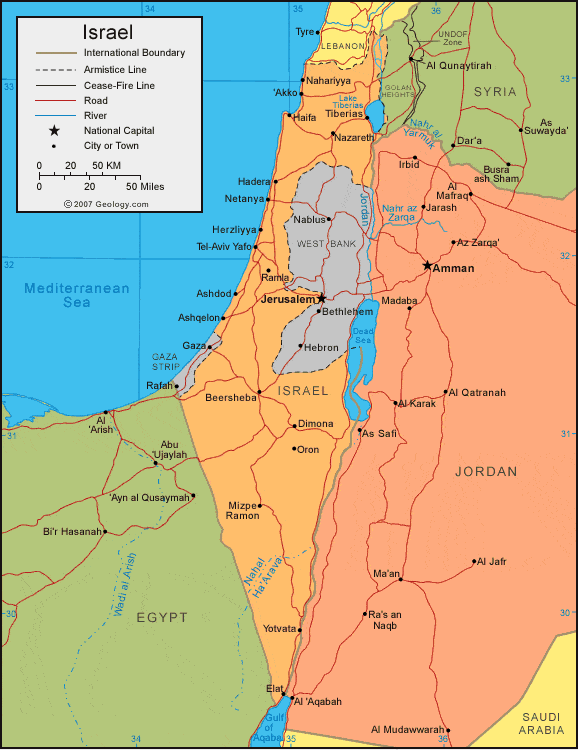The water politics of Jordan River has always been under a vehement discussion due to the location of Israel, Lebanon, Syria, Jordan, and the West Bank on the banks of the river (Bajpeyi 78). Nonetheless, the scarcity of water tends to increase due to the rising population and the domination of water pollution in the area (Bajpeyi 78). The primary goal of the paper is to assess the hydro politics of the Jordan River and the presence of international conflict. In this instance, the scarcity of water as a core resource can be considered as a definer of the relationships among the countries, which are located on the banks of the river.
Jordan River is one of the longest rivers in the world and used as a border to distinguish between the lands of Israel and Jordan (Bajpeyi 79). The introduction of Israel as an independent state could be viewed as one of the problems and generators of the conflict, as the country responded negatively to the sharing of the dam between Syria and Jordan at the river Yarmuk (Bajpeyi 92). It was critical of Syria and Jordan due to the refugees issue, and they are aggressively responding to the actions of Israel, which led to the relocation of Israel’s construction site (Bajpeyi 78). In turn, the water was essentiality for the economic and social development to all of the states mentioned above.
In turn, the external intervention in terms of river regulation was presented by the actions of the United States of America. The country introduced to have plans to optimize the flow of the river for the Arabic States and Israel by introducing unified plans (Bajpeyi 92). The overview of the plans regulated the flow of the conflicts efficiently by optimizing the spreading of water between countries, as the negotiations concerning the efficient distribution of water were present in the modern world.
Nonetheless, the conflict is still existent, as the reduction of the flow of the river and its pollution define the essentiality for redevising the river between the states to minimize its consequences on the climate change. Furthermore, the political conflict between Israel and the Arabic States does not allow developing a compromise due to the necessity to recognize the advancement of Israel and its sovereignty (Bajpeyi 93).
As for the decision-making perspective, the water is viewed as an essential element for the existence of the country, as it defines its economy, health system, ecological condition, and level of protection (The National Academy of Sciences 1).
It could be assumed that the scarcity of the water is the primary cause of the aggressive political actions and rise of the conflict due to the “water stress” theory (Amery and Wolf 57). In this instance, the availability of the water of Jordan is always viewed as a driver for a conflict, as the basin was regarded as a hydrostrategic area (Amery and Wolf 57). It could be said that water contributed to the division of territory, and its lack defined the countries’ aggression.
In the end, Jordan River can be considered as an epicenter of the conflict, as the states have a conflicting nature and cannot deliberate unity as a potential tactic for the improvement of the quality of the water. Nonetheless, despite having incompatible interests the countries such as Jordan and Israel were able to find a solution to a conflict since the necessity of maximizing water supply was vital for the functioning of the nations located in Jordan’s Basin.
In turn, the effective resolutions, which consider the different political natures of the states and necessity of the ecological friendliness have to be developed to eliminate the escalating level of scarcity of the resource.

The map portrays the division of Jordan River between states while clearly defining boundaries of the countries.
Works Cited
Amery, Hussein and Aaron Wolf. Water in the Middle East: A Geography of Peace, Austin: University of Texas Press, 2000. Print.
Bajpeyi, Dhirenda. Water Resource Conflicts and International Security Global Perspective, Lanham: Lexington Books, 2012. Print.
The National Academy of Sciences. Confronting Nation’s Water Problems: The Role of Research, Washington, D.C.: The National Academies Press, 2004. Print.